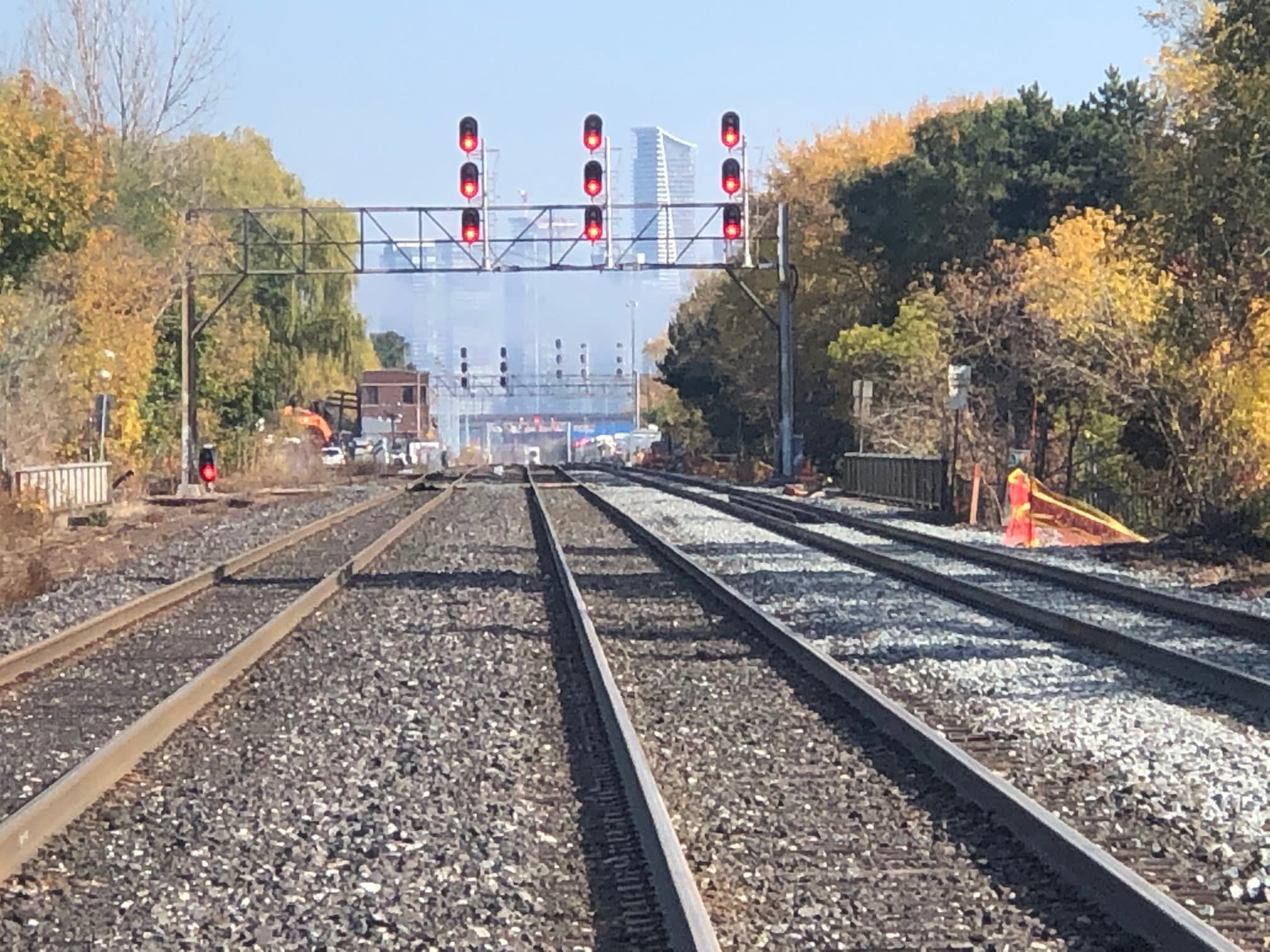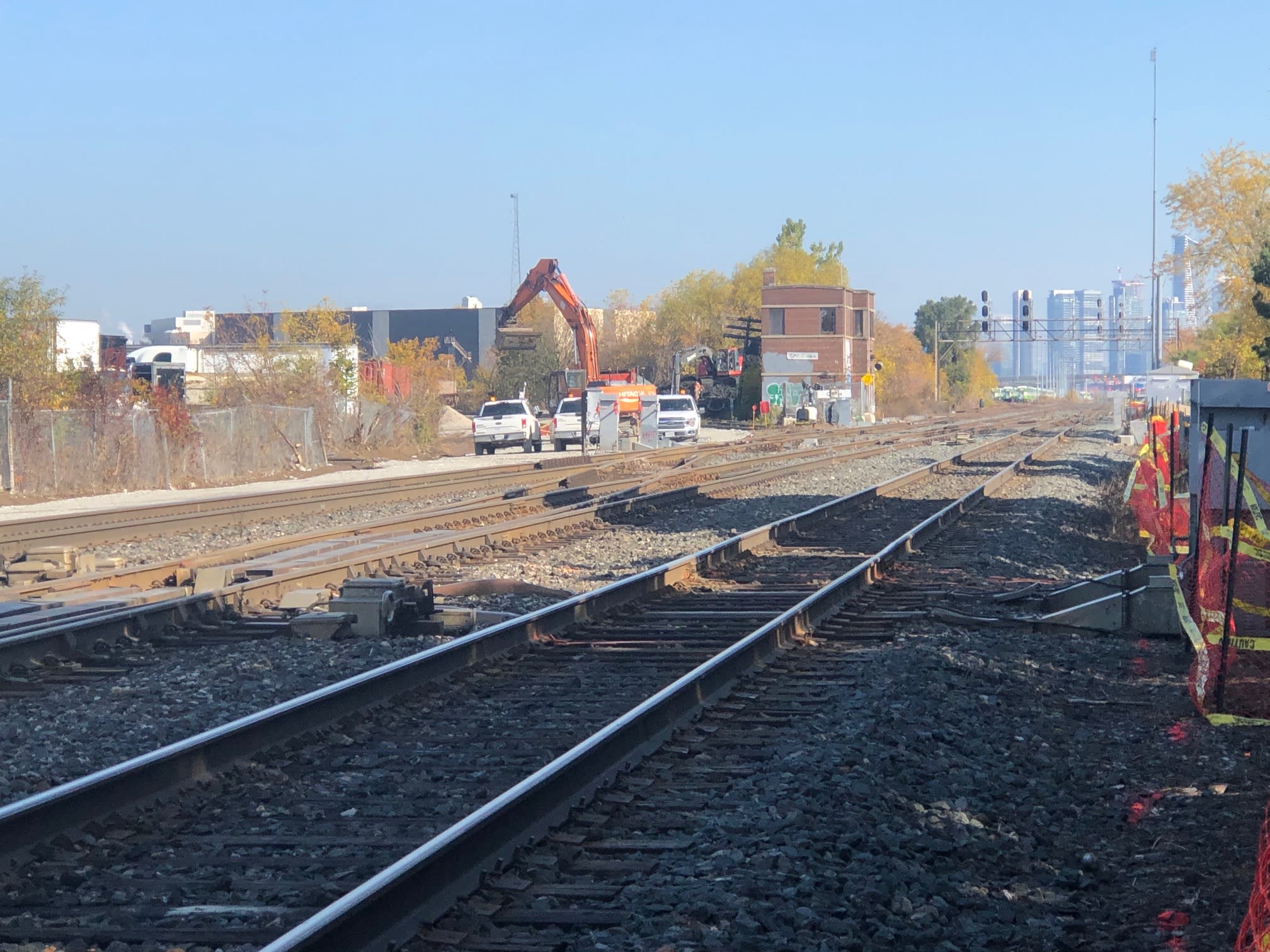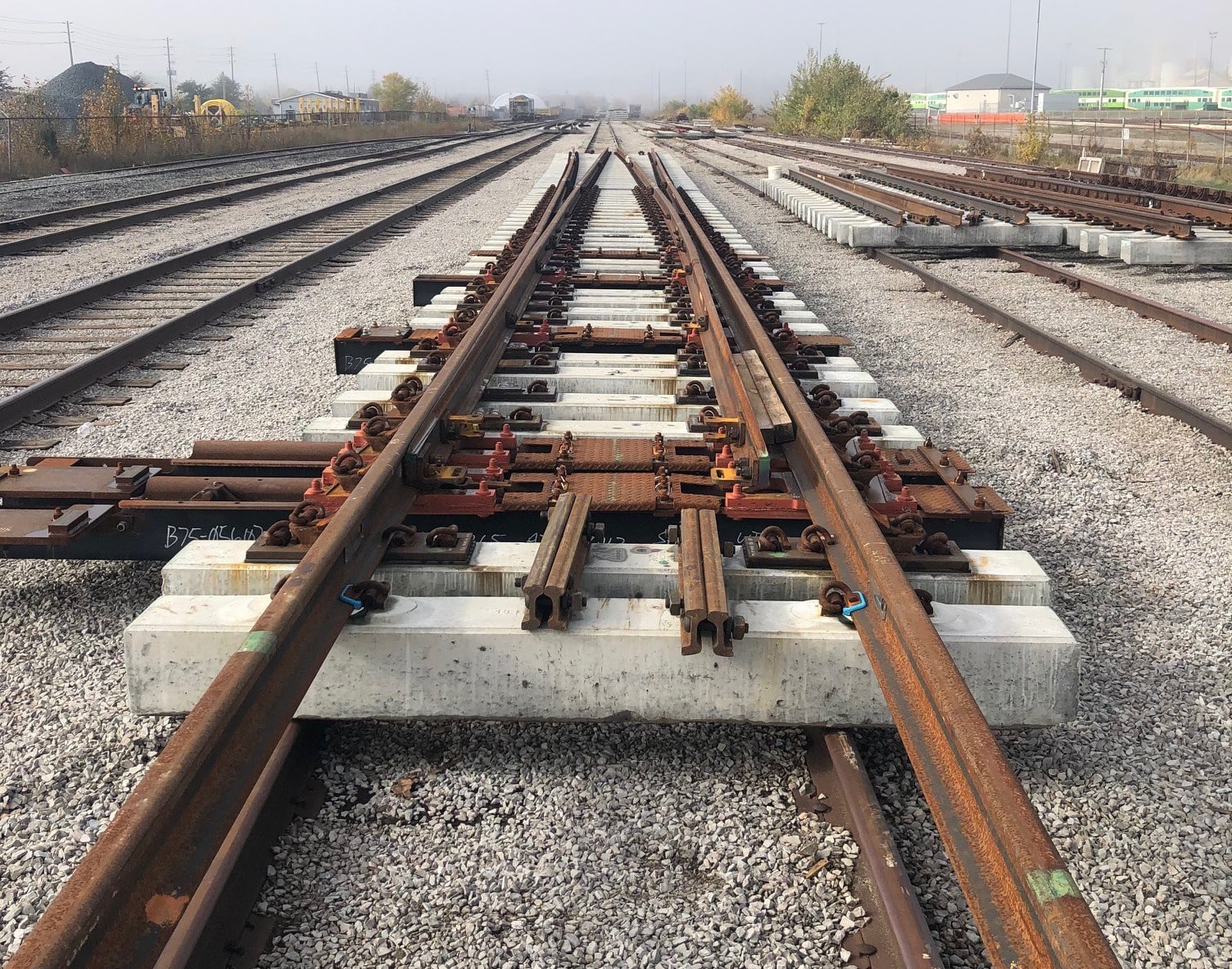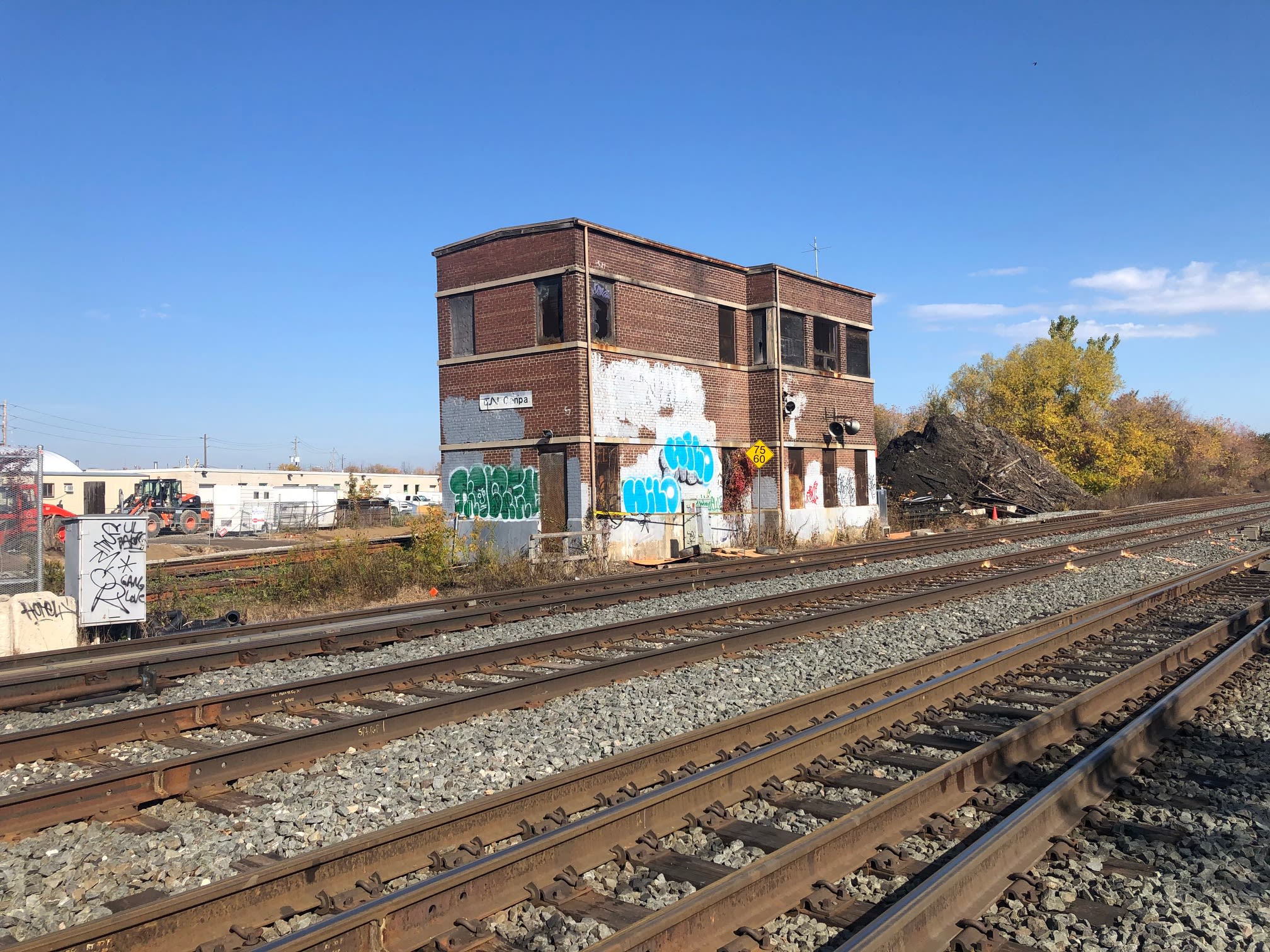New feature under rails on Lakeshore West Line a first in Canada
Modern technology will lead to improved service but getting it done means weekend closures.
Oct 29, 2020
It might be the biggest track and signals construction project Robert Netopilik has ever undertaken – and it’s right in his own backyard.
The Etobicoke native is leading a major upgrade on a key segment of the Lakeshore West GO line near Long Branch GO – one that will bring better train service for thousands of his neighbours.
A weathered piece of rail infrastructure on one of the busiest sections of track needs replacing. Instead of using the old methods, Netopilik and the Metrolinx team are implementing a more innovative approach.
Netopilik was born in Slovakia, but moved to Toronto’s west end as a young boy. He grew up in Etobicoke and went to University in Toronto. He’s been with Metrolinx for eight-years, got his start as a junior project coordinator and worked hard to become Manager of the Track Infrastructure group.
Track and signal work is vital on one of the busiest sections of track in the country. (Metrolinx photo)
A professional engineer by trade, Netopilik is now overseeing the complete overhaul of the Canpa switch plant. The Oakville subdivision and a portion of the Canpa Spur are the particular sections of track being worked on, and a subdivision is the entire section of main track.
"We figured while we are doing this major work let’s try some new, more reliable technology here and make this last longer."- Robert Netopilik, Manager of Metrolinx’s Track Infrastructure group.
Not everyone speaks rail. So what exactly is a switch plant? It’s a major piece of rail infrastructure composed of track and signalling components that allow trains to safely switch from one track to another, all while maintaining speed. Switch plants in general, contain multiple turnouts that act together or individually across any number of tracks.
Switches are also known as turnouts in the rail industry, depending on who you ask.
Looking east towards Toronto on the Lakeshore West GO corridor, with construction happening in the background. (Metrolinx photo)
This is a particularly important location as it keeps GO trains running smoothly on the busiest line in the network. It also helps route trains into the Willowbrook Rail Maintenance Facility, the VIA Maintenance Facility, the Canpa Spur, and more.
Replacing this infrastructure will also shave off precious minutes for train times. While that may not sound like much, every minute gained makes a huge difference in cutting down on rail congestion and makes way for future service increases.
The problem is the existing Canpa switch plant, located east of Long Branch GO, and is one of the oldest ones in the GO network, is that it is heavily worn from use and the infrastructure needs to be replaced. Netopilik says this work is being done now to ensure the transit agency has the ability to add more GO service in the future, increase speeds and increase current service reliability.
The new switch plant with concrete rail ties sits in the nearby rail yard waiting to be installed. (Metrolinx photo)
When he was drawing up plans for the work, Netopilik realized there was a big opportunity for improvement.
“We figured while we are doing this major work we can try some new, more reliable technology here and make this last longer,” said Netopilik.
The new technology he’s referring to are concrete tie turnouts. Instead of using traditional wooden rail ties through these turnouts, construction crews will use concrete rail ties when installing the new switch plant – something Netopilik says will be a first in the Canadian rail industry.
Metrolinx already uses concrete ties for regular track installation but it’s a first for switch installation. Netopilik also notes this type of construction gives the rail infrastructure a longer lifespan and could last 40 to 50 years instead of the usual 25 years.
What’s Next?
Coming up this weekend (Oct. 30), Netopilik says construction crews will be moving on to the next phase of construction work, starting with the demolition of the old decommissioned Canpa signal tower constructed in 1911. Lakeshore West customers might recognize it as the small brick building just east of Long Branch GO where the tracks split off to go north.
The Canpa signal tower is a landmark for many Lakeshore West customers, but it has become a safety hazard and must be demolished to make way for transit expansion. (Metrolinx photo)
Netopilik says that about 250 metres of new track will be also laid as part of ongoing track replacement work.
Major Construction on the Horizon
Replacing several kilometres of track and replacing major rail infrastructure is more than a one weekend job, especially on one of the busiest sections of track in the country.
In order to get all of the work done, Netopilik says Metrolinx will need to shut down the Lakeshore West Line for a handful of weekends over the next year. This will allow crews to operate heavy machinery and not have to stop as trains pass.
The transit agency says customers will be given advanced notice before any weekend closures and alternative travel options will be put in place to make sure people can still get where they need to go.
The entire project is expected to be operational late next year, with total completion in 2022.
It’s a big deal for GO Transit customers, but it also means a lot to the people that work to make it happen. For Netopilik, laying track and upgrading infrastructure in his hometown is making a very special connection.
by Scott Money Metrolinx editorial content manager




